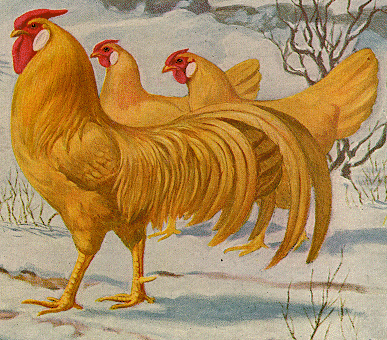|
 |
So far this is a story that has been told before, and has been part of the feminist project of reclaiming a history erased by male-centered narratives of the past. Now comes the task of interpreting the ways in which women used their poultry production as a means of engagement with "progress" and "modernity." Both of these terms point to historically specific and always contested content; farm women were no less active in their imaginings and desires of what those terms referred to than were any other actors. They were, however, demonstrably less powerful in many public arenas than other actors; their imaginations and desires were, therefore, more mediated -- through husbands and fathers, and through their children -- than were the men of their class, ethnic group, region, and race. But through chickens (and dairy, especially butter and, in some areas, cheese), women acquired the money that allowed them to act as independent agents in the world.
Fink (1986:136-7) argues that men in "Open Country," Iowa, actively, if subtly, diminished the significance of this income by referring to it as "pin money" and coding chickens in such a way that men lost status by their association with them. I did not find a comparable denigration by men or women in southern Illinois, probably reflecting the different ethnic backgrounds of the people in the two regions — the Anglo-Americans who migrated to Iowa from the U.S. Northeast with whom Fink worked in contrast to the largely German, Scots-Irish, and Irish ancestry people who migrated to southern Illinois from the Appalachian region or came directly from German-speaking regions of Europe in the mid-19th century. This small point indicates the difficulty of posing any unified response to "modernity" across the various divisions within rural America.
|
|
|
|
"Modernity" and U.S. farm women's poultry operations: farm women nourish the industrializing cities 1880-1940. Paper presented at the international conference, The Chicken: Its Biological, Social, Cultural, and Industrial History: From Neolithic Middens to McNuggets. May 17-19, 2002, Yale University, Program in Agrarian Studies. © Jane Adams 2002
Jane Adams' Home Page
|
|
|
|
|
|
